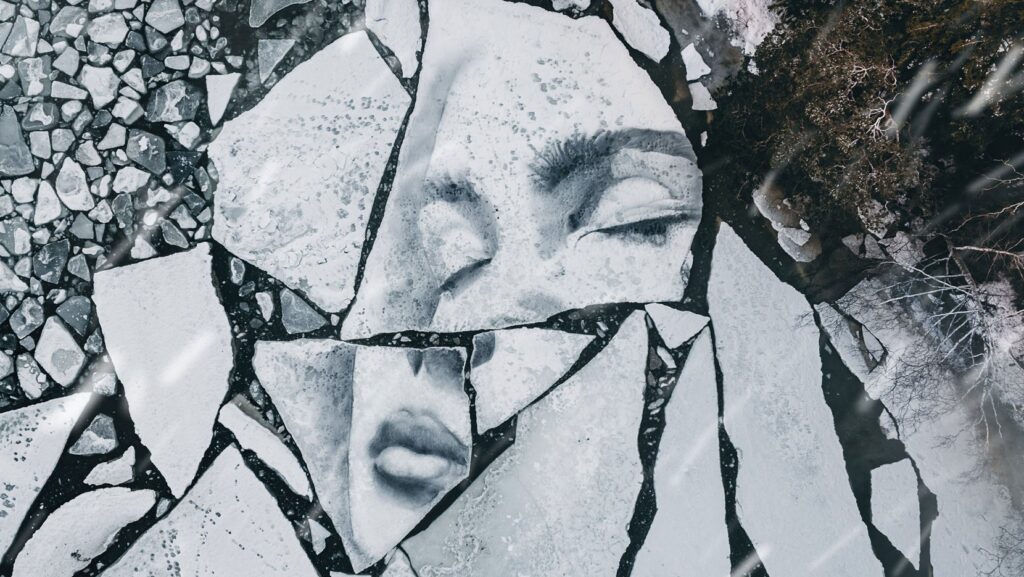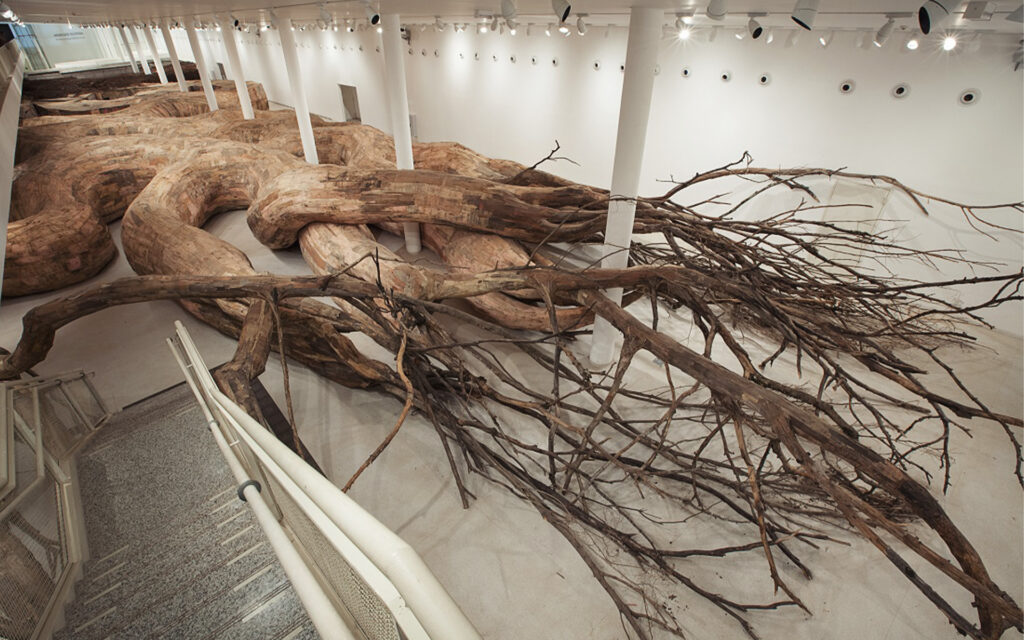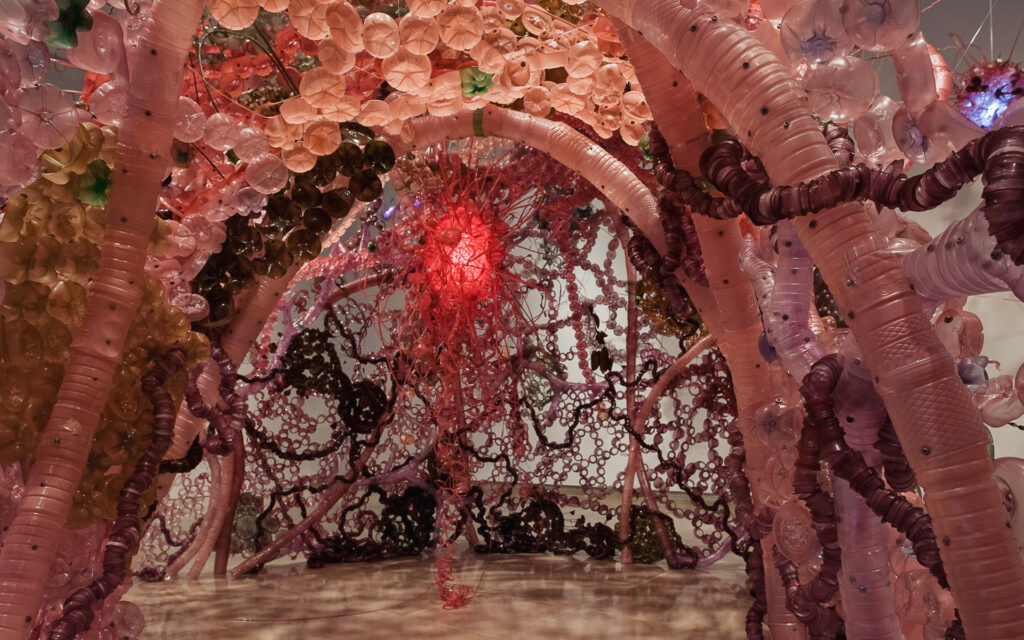Art lies inherently within the human being, whether it’s on the surface or deep within. Since prehistory, art has played a vital role in documenting the history of diverse societies and cultures. According to the Real Academia Española (RAE), it manifests human activity by interpreting reality or expressing the imaginary through various resources like plastic, language, or sound.
It’s a unique interpretation for each individual, shaping itself through various elements and experiences. It doesn’t need immediate comprehension or adherence to beauty norms; instead, it evokes emotions, urging viewers to explore new perspectives with its astonishing ability to transcend rationality.
Art arises from a desire of a person to communicate with another.
-Edvard Munch
Each artist seeks ways to communicate, to be, with the means they handle. Some will do it with music, others with dance, painting, or writing. But what happens when they go beyond the established, when their creativity needs other means to express what they want to say? Unconventional means that allow creating innovative works and demonstrate the immense diversity of the word art. Here are some artists who have found their voice by experimenting with non-conventional implements, granting their art a unique distinction and declaration to find alternative ways of making art. Beyond technique, they all seek ways to contribute their vision and convey a message about nature.
David Popa

Born in New York but based in Finland. His alternative ways of making art combine street art from cities on organic surfaces typical of nature.
Inspired by his father’s work with graffiti, street art, and muralism, Popa has developed his own version of this art. His large-scale works are not based on urban walls but on wild, changing and challenging spaces that depend on weather conditions such as light, wind, or water.
Considering himself a paleo-painter, he draws inspiration from cave art, using natural pigments like vegetable charcoal, ground shells, and earth pigments, respecting the environment as artisans did millennia ago. A technique that took him years of experimentation to achieve and now impregnates even the most remote places with skill.
His art is so ephemeral that it may last only a few days before returning to nature. Therefore, Popa documents his work through photographs and videos with the help of drones. These allow him to record his work from start to finish, going through all the adversities and challenges posed by the elements of nature.
While it is striking at first glance, its impact is even greater after understanding the message. The power of nature against human beings is moving. It reminds us of our fleeting passage through the planet, our mortality, our brief existence. It questions our role and the footprint we leave on the ecosystem, emphasizing our connection with nature and prompting reflection on the impact of our actions.
Henrique Oliveira

The work of this Brazilian artist fluctuates between painting and sculpture, with three-dimensional works that make him an installation artist. Works that allow you to enter between their walls, under imposing structures that reflect the complexity of his meticulous work: thin strips cut from leftover material and then overlaid one by one to give life to his works.
Wood is his material par excellence for creating alternative ways of making art, perhaps hardened in him by his father’s trade as a carpenter. Thus, he turns to this element to develop sumptuous organic structures that reference nature.
His art is a declaration of intentions that begins from the moment he collects his material. A humble material, with which he builds from pieces destined for the trash. Waste that acquires purpose in ambitious works of art that emerged after experimenting with plates found in garbage containers in São Paulo. Plates of different colors, marked by the passage of time and the characteristics of their environment. He named his first series after these plates, originally used in construction or to block access to vacant lots, where he highlights what was meant to be concealed.
From that series, he has created multiple installations where nature contrasts with human intervention, conquering it. Columns emerge as forests, logs protrude from building windows, walls break, transforming spaces previously displaced by human action.With them, he seeks to criticize our actions and not leave us indifferent to the power of nature. As he himself affirms, we should strive to conserve rather than conquer that which has been done for centuries.
Aurora Robson

For this artist born in Toronto, plastic is her main instrument. Over the past two decades, she has been transforming plastic waste into large organic sculptures.
Much like nature, they display great movement and impose themselves delicately at the same time.
Thus, with her art, she seeks to put plastic pollution and waste management in the spotlight by creating alternative ways of making art. The speed at which plastic is consumed and produced is worrying for the future of the planet, and Robson is well aware of this. She considers plastic as a global nightmare and art as the language that allows her to speak of this problem and address it from a less negative perspective, to find potential and create from an issue that is hard to bear.
With dreamlike shapes, her sculptures reflect the mutability of dreams into nightmares and nightmares into dreams. Part of the idea is how to turn something that scares her into something pleasant. Transforming this global nightmare into something a little more enjoyable. And the problem of plastic is undoubtedly a nightmare we all want to wake up from.
Her work encompasses multiple methods of intervention, in which she has been constantly exploring, experimenting, and researching. Her challenge lies in raising awareness about the compulsive generation of waste in our society and its impacts on the environment and health, fostering dialogue and reflection.
She does not seek to increase the use of this material or be part of the small percentage of plastic that is recycled. On the contrary, she seeks to reuse the large percentage of plastics that remain in the environment for years.
Nor does she want to contribute to the idea that it is okay to discard if it will be recycled later. In this era of the Anthropocene, there must be a commitment to finding ways to generate the least amount of waste possible and to act decisively.
She created the Vortex Project with the aim of developing a community that works and innovates around the issue of plastic, sharing knowledge, and helping each other among the different artists who work with this material. With this project, they also seek to implement study plans, in universities and institutions, to develop skills and perspectives.





